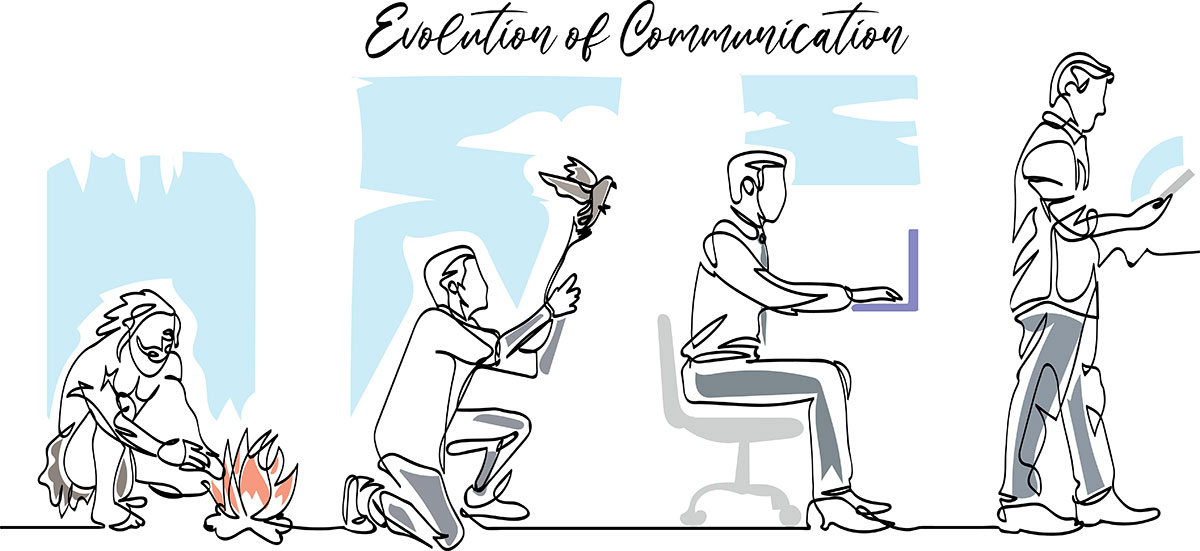- Navigator
- Prospecting and Business Attraction
 About 20 years ago, my prior boss wrote an article titled “Holding the Ugly Baby.” No, she was not literally talking about ugly babies. Instead, she was referring to the practice of “cold calling” — something no one wanted to do, but at the time, as a sales prospecting tool, it was at the top of the list of ways to reach out to an executive.
About 20 years ago, my prior boss wrote an article titled “Holding the Ugly Baby.” No, she was not literally talking about ugly babies. Instead, she was referring to the practice of “cold calling” — something no one wanted to do, but at the time, as a sales prospecting tool, it was at the top of the list of ways to reach out to an executive.
So, what’s changed since then? If you are in business development, your outreach toolkit has most certainly extended beyond the telephone over the past several years.
Technology companies have continued to innovate and come up with new ways to keep us connected. We no longer use just the phone and a fax machine to communicate. There has been a huge increase in the development and use of digital sales prospecting tools. Long gone are the days of just picking up the phone and calling to ask for the president of the company or the person who is in charge of the decision-making or site selection. If you want a prospect to respond, you have to know who they are and what they do. Research has taken a front seat in the sales prospecting process.
“Technology has forever changed the way we communicate and the way we relate to the world and each other (Cawdell, n.p.). Communication today has become both personal and impersonal – texting, tweeting, blogging, these methods of communicating have allowed us to talk ‘at’ a wide range of people without having to personally talk ‘to’ them. In this way, we have become more social, but less sociable (Cawdell, n.p.). On the other hand, however, with the world becoming a more instant place, (Cawdell, n.p.), communication has been made as easy as a click on the mouse. According to MetLife, or Metropolitan Life Insurance Company, 4 out of 5 people are now on social media. Communication now moves from one-sided to conversational as people want to be interacted with.”
“The Evolution of Communication: Effects on the World of Science,” Angeles, Ereneta, Jeng, Litan, Montenegro, seguie, Tuason
Three years ago, the world went through a global pandemic that truly transformed the way we interact with each other. We became masters of communicating through video (e.g., Zoom, Microsoft Teams, FaceTime, WebEx, WhatsApp, etc.) and digital messaging (e.g., email, SMS, Messenger, LinkedIn, etc.). And more recently, companies have started using various forms of AI, including ChatGPT, as another sales and marketing tool for reaching prospects.
Through remote work, companies have realized employees can be productive (and in some cases more productive) and they can still successfully grow and diversify their businesses. All without needing an office in case someone decides to drop by and without being tied to a desk so a call isn’t missed.
Executives are now very accustomed to virtual meetings in lieu of meeting physically in person — the virtual handshake has become normalized. But if your job is in business development/retention or sales and meeting people in person was a big part of your day-to-day activities, the wide adoption of virtual technology has probably revamped your prospecting toolkit.
Since the pandemic, the use of email as a sales prospecting tool has gone up dramatically. With many businesses and organizations increasing the frequency of their email campaigns, marketing departments have worked overtime to be “in the know” about what’s important to their target audiences to keep email open and click-through rates high.
I think a natural thought process is if you can’t get someone on the phone, follow up with an email. The email addresses of many executives are easily found online as a result of our shift to a more digital environment, and in some cases, email addresses are easier to find than phone numbers.
Research is Key in Successful Prospecting
Research most often turns cold emails and phone calls into warm conversations. However, some prospecting staff don’t know what to research and spend too much time looking at irrelevant information. What should you be looking out for? Job changes, promotions, stakeholder posts, mergers, job openings, product announcements, company expansions — any changes in the operation.
So, where should you go to do this research? While there are numerous websites with public information available, LinkedIn is widely regarded as a top prospecting tool. It is the world’s largest professional social network aimed at building relationships among businesses through their company and employees’ LinkedIn social media profiles.
More companies are investing in email as a sales tool, and you need to make sure your message has value to break through. Emails should show your intended target audience you have done your homework and know who they are and what they do. If you have found something online that has value to them, share it with them. Using the same copy-and-paste message for everyone across all your emails will no doubt result in your message being deleted (or worse, getting flagged as spam).
Respectful Persistence
Prospecting is not easy. It can quickly get monotonous and stressful. It takes a lot of value-added contacts and leveraging of technology to be consistently successful with your outreach process.
In an article on post-pandemic prospecting by the KLA Group, they explain that it takes more than nine touches to reach a prospect, but in their poll of prospecting professionals, less than half of the respondents said they make more than six attempts.
 Source: KLA Group, https://www.klagroup.com/post-pandemic-prospecting-5-ways-to-succeed-now-and-in-the-future/
Source: KLA Group, https://www.klagroup.com/post-pandemic-prospecting-5-ways-to-succeed-now-and-in-the-future/
The sales process starts with prospecting. The most effective way to maintain the process is to make it a habit. Block a specific time each day, two hours from 1-3 pm for example, and devote that time solely to research and prospecting. This way, it will not be just another task to check off on your to-do list but will become a routine that you naturally follow.
The other day I spoke with a client who said, “I’m old school, I want to pick up the phone and actually speak to someone, but my staff just prefers to communicate by email or text.”
The phone call is never going to go away as a marketing tool — it may just not be as high up as it was in the prospecting hierarchy. No longer is it necessarily the first attempt. Sometimes it is the third or fourth. But you cannot simply sit back and hope prospects find you. You need to find a way to continually engage potential leads.
The industry is in a lot of flux right now. Executives are being cautious with their expansion plans. It is important to reach out with something that has value to keep them engaged and vice versa (value-added interruptions). Initial conversations are important. Follow-up is important. Patience (“respectful persistence”) is important.
Our engagement professionals reach out to executives every day. And while we still rely on the phone as our primary outreach method, we are constantly refining our toolkit and adopting new tools. In the last few years, we have been including a lot more digital touches, such as email and LinkedIn messaging, in our campaigns.
Learn about our prospecting and business attraction services
Additional Reading
- A look back at digital marketing tools in the early 2000s
- “5 Business Development Trends to Watch,” Forbes
- “The Top 15 Sales Prospecting Techniques to Use in 2023,” Growbots.com
- “7 Sales Prospecting Techniques You Need to Succeed in 2023,” Zendesk Blog
- “How COVID-19 has Pushed Companies Over the Technology Tipping Point — and Transformed Business Forever,” McKinsey & Company
- “Survey: How Sales Reps Adapted to the Pandemic,” The Pipeline/ZoomInfo
- “What Could the Future of Sales Look Like? We Asked Top Sales Leaders,” HubSpot Blog
- “2023’s 20 Best Sales Prospecting Tools,” HubSpot Blog




